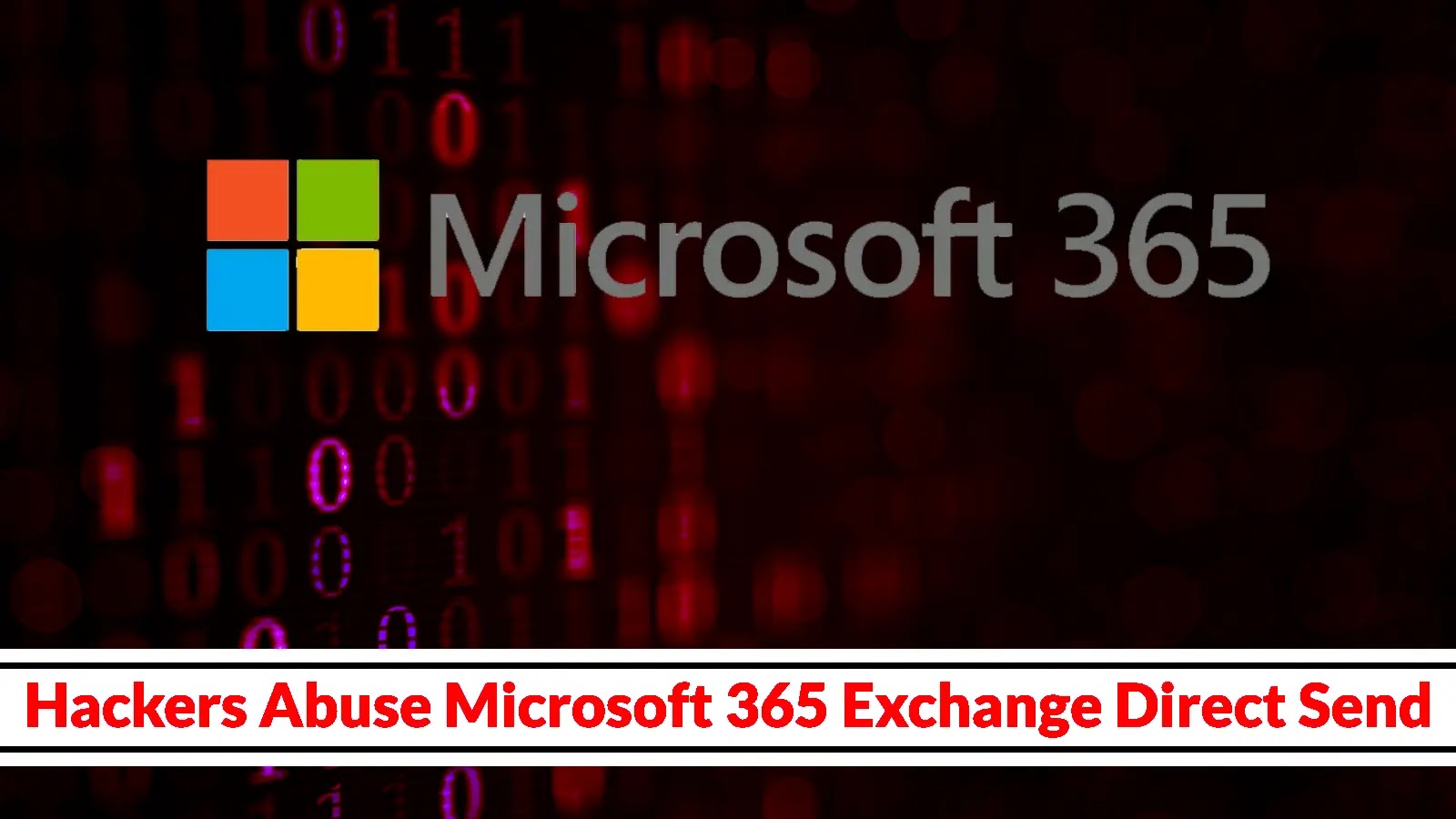
Hackers Abuse Microsoft 365 Exchange Direct Send to Bypass Content Filters and Harvest Sensitive Data
Unmasking the Threat: How Microsoft 365 Exchange Direct Send Becomes a Hacker’s Gateway
In the intricate landscape of modern cybersecurity, even seemingly innocuous features can be weaponized. Our focus today is on a critical vulnerability inherent in Microsoft 365 Exchange Online’s Direct Send feature. Originally intended to simplify email transmission for legacy devices and applications, Direct Send has evolved into a significant risk, allowing sophisticated phishing and business email compromise (BEC) attacks to bypass traditional content filters and compromise sensitive data. As cybersecurity analysts, understanding these subtle threats is paramount for robust defense strategies.
The Double-Edged Sword: Understanding Direct Send’s Functionality
Microsoft 365 Exchange Online’s Direct Send feature was designed with convenience in mind. It enables devices like multifunction printers, scanners, and older line-of-business applications to send emails directly to internal and external recipients without requiring full user authentication via Exchange Online. This functionality eliminates the need for more complex SMTP client submission settings, making it easy for legacy hardware and software to operate within a cloud environment.
However, this ease of use comes at a significant cost: reduced security. By bypassing rigorous authentication and security checks, Direct Send creates an exploitable pathway that cybercriminals are actively leveraging. The very mechanism designed to streamline operations now serves as a conduit for malicious actors to launch highly effective attacks.
Exploiting the Opening: How Attackers Leverage Direct Send
Attackers exploit Direct Send by configuring their malicious campaigns to mimic legitimate internal communications. Since Direct Send allows unauthenticated email relay, attackers can craft emails that appear to originate from within an organization, thus bypassing many standard email gateway security controls and content filters. This makes their phishing attempts remarkably potent.
- Bypassing Content Filters: Emails sent via Direct Send often bypass spam filters, anti-phishing technologies, and other content-based security measures because they appear to come from a trusted, internal source.
- Enhanced Phishing Efficacy: With direct access to user inboxes, phishing emails become highly effective. They can masquerade as urgent internal requests, HR communications, or IT alerts, prompting employees to divulge credentials or sensitive information.
- Business Email Compromise (BEC): Direct Send facilities enable sophisticated BEC attacks where adversaries impersonate executives or critical personnel, sending fraudulent invoices or instructing fund transfers directly to victims without being flagged by security systems.
- Sensitive Data Harvesting: By appearing legitimate, these emails can trick users into clicking malicious links, downloading malware, or directly submitting sensitive data on spoofed login pages.
Remediation Actions: Securing Your Microsoft 365 Environment
Mitigating the risks associated with Direct Send requires a multi-faceted approach. Proactive measures are essential to safeguard your organization against these sophisticated attacks.
- Avoid Direct Send Where Possible: If your organization does not strictly require Direct Send for legacy devices, disable it entirely. Implement SMTP client submission (SMTP AUTH) for applications and devices requiring email relay, which offers a more secure, authenticated method.
- Implement Conditional Access Policies: For instances where Direct Send is unavoidable, enforce Conditional Access policies that restrict its use to specific IP ranges or trusted network locations. This significantly limits an attacker’s ability to exploit it remotely.
- Monitor Mail Flow Logs: Regularly scrutinize Exchange Online mail flow logs for suspicious activity originating from Direct Send configurations. Look for unusual volumes of email, unexpected sender/recipient patterns, or emails with suspicious links or attachments.
- Enable DMARC, DKIM, and SPF: While Direct Send might bypass some internal checks, robust email authentication protocols like DMARC, DKIM, and SPF are crucial for validating the legitimacy of emails entering and leaving your organization. Ensure these are correctly configured and enforced.
- User Awareness Training: Educate employees about the dangers of sophisticated phishing and BEC attacks. Train them to identify suspicious emails, even those that appear to come from internal sources, and to report them promptly.
- Multi-Factor Authentication (MFA): Mandate MFA across all user accounts. Even if credentials are harvested, MFA provides an additional layer of security to prevent unauthorized access.
Tools for Detection and Mitigation
Leveraging the right tools is critical for identifying, analyzing, and mitigating threats stemming from Direct Send abuse. Here’s a brief overview of useful tools:
| Tool Name | Purpose | Link |
|---|---|---|
| Microsoft 365 Security & Compliance Center | Mail flow rules, transport rules, audit logs, and threat investigation. | https://compliance.microsoft.com/ |
| Microsoft Defender for Office 365 | Advanced threat protection, anti-phishing, safe attachments, and safe links. | https://docs.microsoft.com/en-us/microsoft-365/security/office-365-security/ |
| DMARC Analyzers | Monitors DMARC reports to identify email spoofing attempts. | https://dmarcian.com/ |
| Microsoft Entra Conditional Access | Enforces access policies based on user, device, location, and application. | https://learn.microsoft.com/en-us/entra/identity/conditional-access/overview |
Key Takeaways: Fortifying Your Email Perimeter
The exploitation of Microsoft 365 Exchange Online’s Direct Send feature is a stark reminder that cyber threats evolve, often targeting the very functionalities designed to promote efficiency. Organizations must recognize that the convenience of Direct Send can be directly proportional to the risk it introduces. By understanding its vulnerabilities, implementing robust authentication, enforcing strict access controls, and continuously monitoring mail flow, IT professionals and security analysts can significantly strengthen their email security posture and protect sensitive data from falling into the wrong hands. Proactive vigilance and a layered security approach are not just recommended, but essential.





